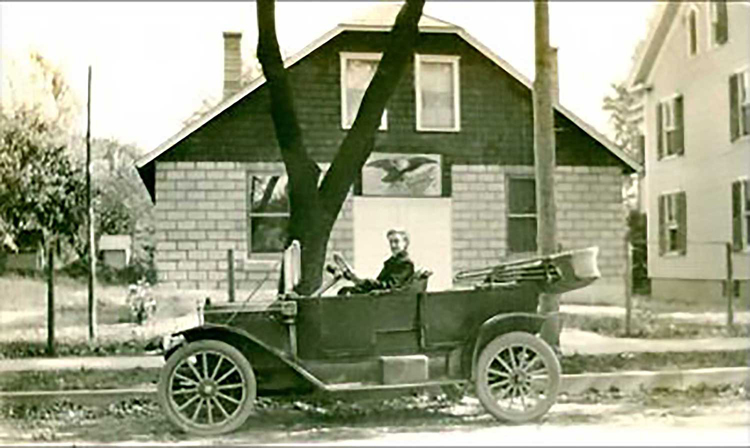Hammonton's Bellevue Avenue Residential District (no. 1)
A Brief History of
Hammonton’s Bellevue Avenue Residential District
Bellevue Avenue is located on a 60-foot wide, tree-lined street that provides the main entry into the town’s commercial district from routes 30 and 206. Bellevue Avenue is the town’s grandest residential street. The architectural styles presented here are more elaborate than elsewhere in town, setbacks are more generous, and even the bungalows are large and fashionable.
Populated with mostly large, high-style historic homes on spacious lots, Bellevue Avenue is unique among the town’s neighborhoods. Houses from all architectural periods, including those built within the past 50 years, are primarily the same size and scale on Bellevue Avenue. Most are built of wood, and although many have been covered with aluminum or other modern materials, they retain their historic massing and fenestration patterns. The majority are set back between 50 feet and 125 feet from the street.
Sandwiched between two commercial zones, the buildings (houses, a few outbuildings, and two churches) along the residential part of Bellevue Avenue form a distinct entity. Ages of the buildings within the district significantly range from the town’s settlement as an agricultural community in the 1850s to a handful built in the late 20th century.
The houses on Bellevue Avenue include scattered vernacular examples of early- and mid-Victorian style farmhouses (and one barn) erected by the town’s first settlers. Also present are both vernacular and high-style examples of the various later Victorian, Queen Anne, Colonial Revival, Mission, Tudor Revival, and bungalow styles that were built as the original, mid-19th century farms were subdivided beginning in the late 19th century and which signal the avenue’s gradual transition from a collection of small farmsteads to a residential neighborhood by the mid-20th century.
Bellevue Avenue has several mid-19th century farmhouses that were Victorianized in the late 1800s or were “Colonial Revival Stylized” in the early 1900s.
1. Eagle Theatre
208 Vine Street

Built in 1914, the Eagle Theatre is a one-story, gable front building. It was built as a movie theatre in 1914 by Samuel Litke Jr. (1872- 1945), a carpenter who moved to Hammonton around 1912. He first showed moving pictures in a tent not far from this location beginning in the summer of 1912 and in the colder seasons rented space in several downtown locations before building this structure in 1914. He sold the theatre in 1919 and it remained in use until the late 1920s, when the new Rivoli Theatre (built in 1927) opened. It then served as a church and then a warehouse for an auto parts store. In 2007, the building was sold and rehabilitated. In June 2009, the Eagle Theatre reopened as a venue for the performing arts.


